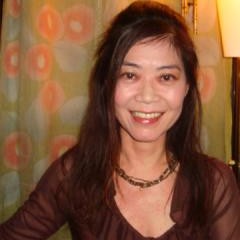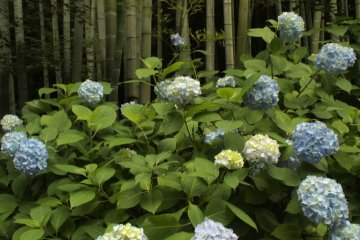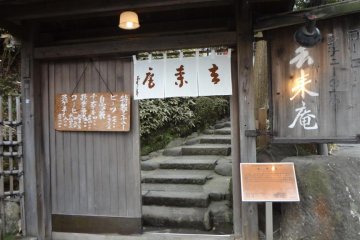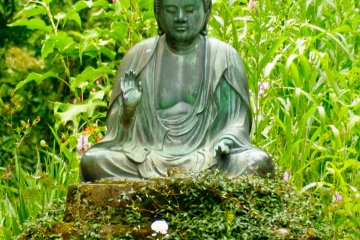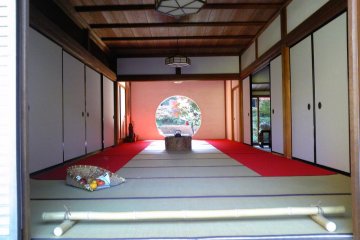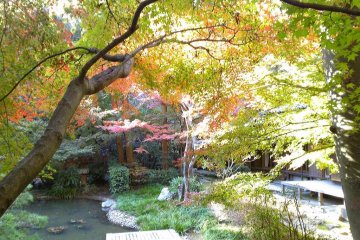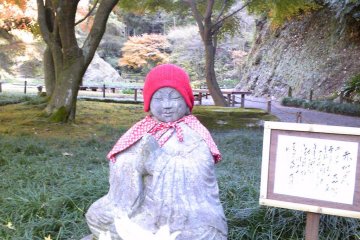After enjoying the city here in Japan, you might want to put yourself in nature and feel the change of seasons.
Meigetsu-in (明月院) in Kitakamakura, established in 1160, is a nice place to go, and only one hour from Tokyo. You will spend a calm, relaxing time at this temple.
“Kare-san-sui Teien” (枯山水庭園) is a Japanese-style garden located in front of the hondou (本堂), or main building.
Zen Meditation
The style represents the view of mountain and water making use of stone or sand without using any water or pond. Kare-san-sui style is based on the Zen (禅) spirit. Do you know about Zen meditation? When you do Zen meditation it is said that you need to make your mind blank, erase your thoughts … but those things are not easy to do actually. However, I found that just looking at this garden could make me feel calm.
Picture Frame of Nature
Inside of the hondou, there is a circle window or ensou (円窓). Looking through the enso is a very interesting way to see nature, just like viewing a beautiful painting. Enso works as the frame of the painting and the painting itself changes from season to season.
Tsurubeno-I (瓶ノ井) is one of 10 very old wells in Kamakura, built in the Edo period (which started in the year 1600). Surprisingly, this well is still alive and working.
Flowers
Meigetsu-in Temple is also famous for being the ajisai-dera, or hydrangea flowers temple.
You can see hydrangea in early summer. Peach blossoms, satsuki azaleas and lily magnolia in spring, scarlet maple leaves and fragrant olive in fall, Japanese apricot blossoms and Christmas rose in winter. And countless other flowers that I have not mentioned.
Jizo
I recommend going into to the backside garden, on the other side of the hondou. I was walking through this pretty garden looking at autumn leaves when I found a little “jizo red” (赤地蔵). Dressed in red, a jizo is a small statue—just like a guardian angel—and it had a poem attached:
Jizo Red prayer
The earth sings
Can you hear the sea sing as one?
Listen carefully to the poetry of life –
The color Red flowing through your body
Prayer of thanks to the red earth
I was filled with happiness after I read this poem.
By the way, I heard from someone at the temple that the jizo’s clothing is changed sometimes!
Bamboo Grove
In addition, I recommend visiting the temple’s bamboo grove.
I was sitting in the grove, breathing deeply and looking up at the sky between the trees. I felt that a purifying of my mind and body was complete.
Bamboo is said to have a cleansing effect. For example, old Japanese people used to use bamboo skin to wrap food in for antibacterial purposes, and wild bears eat bamboo before they go to hunt so that other animals cannot smell them.
To get into the temple costs 300 Yen, and an additional fee of 500 yen is required to enter the garden on the backside of the hondou. It is open only in early summer and autumn, so perhaps it would be better to check before you go.


